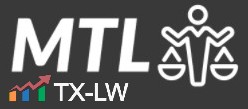If you remember the time before the widespread use of personal computers, you will understand this better than others. We live in a society full of data. It’s everywhere. And it’s growing in volume, scope, and utility.
The explosion of data has allowed taxpayers to produce documents, documents, and more documents. But why? Documenting business expenses represents an even more monumental challenge for many taxpayers now. And the IRS has quickly upped its expectations given the ability of taxpayers to produce more paper.
At the same time, at some point, if not now, statistics can tell us just about everything we need to know about recurring events and events that are routine. The data is there. But putting the data to use is the challenge.
In the context of tax deductions, there is a question as to why we have to prove out every business expense during an IRS audit or to report the number on a tax return, for example, when it is common knowledge that a business in a particular industry, with a particular number of employees, and a particular amount of income will incur on average a set amount of expenses. Why is this not good enough to compute one’s taxes? Can statistics replace business and accounting records?
A recent Tax Court case, Murray v. Commissioner, T.C. Summary Opinion 2012-66, provides an opportunity to consider these questions.
Contents
Facts & Procedural History
Danny Murray worked as a truck driver and operated his own trucking business in 2007. On his Schedule C, Murray claimed numerous business expense deductions for the trucking activity.
However, Murray failed to keep supporting records for the amounts deducted. On audit by the IRS, the IRS disallowed the expense claims due to lack of documentation.
The IRS did allow $7,860 of trucking expenses based on industry averages from the online database BizStats. However, the court upheld the disallowance of expenses exceeding that statistical estimate.
Understanding Statistics, Generally
To appreciate the significance of Murray and the broader implications of statistics in tax matters, it’s essential to grasp the fundamentals of statistics itself.
Statistics involves the collection, organization, analysis, and interpretation of data. It is the science of making sense of information and drawing conclusions from samples and datasets.
Both businesses and governments rely extensively on statistics in decision-making processes. This naturally leads to the question of why taxpayers and the IRS do not routinely use statistics for matters as fundamental as determining tax deductions.
The Use of Statistics for Taxes
Taxpayers shoulder substantial documentation burdens under the tax code. Section 6001 mandates that taxpayers maintain records that sufficiently substantiate all items claimed on their tax returns, such as charitable deductions, and Treasury regulations provide extensive guidance on recordkeeping.
In cases where adequate documentation is lacking, the IRS retains the authority to challenge or deny claimed deductions. The onus rests squarely on the taxpayer to validate expenses when under examination. While estimates can come to the rescue when records are missing, taxpayers must furnish credible evidence that the estimate reasonably approximates actual expenditures. Relying solely on third-party statistics often falls short of meeting this standard.
The famous Cohan rule permits courts to estimate deductions when some foundation is presented. This raises the question of whether statistics can serve as this foundation. If a relevant and applicable dataset exists, one might wonder why it cannot be used. The question, however, remains largely unanswered by the courts. The Murray case, nonetheless, serves as a reminder that statistical averages can be deemed unreliable when the taxpayer’s testimony lacks explanations or corroborating evidence.
In stark contrast, the IRS and the courts frequently rely on statistical data as a reasonable proxy when taxpayer records are unavailable. Third-party sources, such as industry surveys and databases, provide benchmarks against which to assess the reasonableness of deductions based on a taxpayer’s specific situation. This apparent imbalance reflects the higher level of accountability placed on taxpayers to substantiate their own tax returns. Tax authorities wield more latitude in employing external statistics when scrutinizing taxpayer claims.
The Potential Utility of Statistics for Tax Deductions
Statistics involves analyzing data samples to infer insights about an overall population. Statistical sampling enables estimating unknown population parameters by studying a small representative subset. Applied to tax deductions, statistical sampling could allow projecting an average expense amount across a large number of missing transactions, based on examining a random subset with available documentation.
For example, a trucking company lacking fuel receipts for over 2,000 trips could document the cost per mile for a randomly selected 100 trips. If the sample average was $1.15/mile, that could be used to estimate total expenses based on total miles for all 2,000 trips. This approach harnesses statistical probability theory to infer overall results from a microscopic view.
Intuitively, this seems a reasonable solution when comprehensive records are lacking. However, IRS guidelines strictly circumscribe taxpayer abilities to invoke statistical estimates while allowing broader IRS reliance on external benchmark data. These double standards reflect the incompatible incentives of taxpayers minimizing liabilities versus the IRS safeguarding public revenues.
IRS Guidance on Statistical Sampling
Revenue Procedure 2011-42 recognizes the potential efficiency of statistical sampling for substantiating large pools of data. However, it imposes stringent requirements more aligned with an IRS audit than taxpayer filing needs.
Moreover, the IRS freely employs third-party statistics to challenge taxpayer positions despite prohibiting taxpayers’ use of general statistical data. This imbalance arises from the higher accountability placed on taxpayers to prove their specific position rather than rely on industry proxies. In court, sampling rarely provides adequate documentation unless the taxpayer’s situation closely matches the data source.
So the IRS follows the maxim “Statistics for me, but not for thee.” Only scrupulous adherence to the Revenue Procedure sampling criteria grants taxpayers access to this tool. In practice, this creates a negligible out for most.
The Takeaway
While statistical sampling offers hope for substantiating incomplete records, current guidelines pose high hurdles for taxpayers. Auditors enjoy wider latitude repudiating deduction claims using broad industry data. Without question, comprehensive documentation remains the prudent path, statistically speaking.
In 40 minutes, we'll teach you how to survive an IRS audit.
We'll explain how the IRS conducts audits and how to manage and close the audit.


